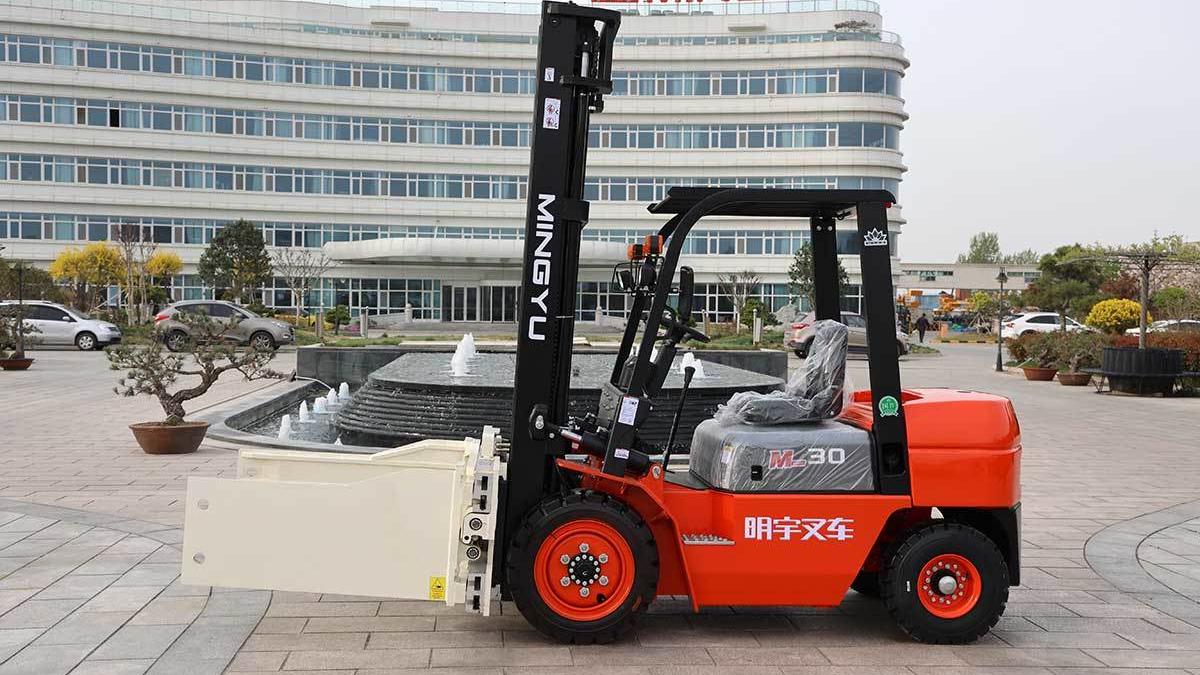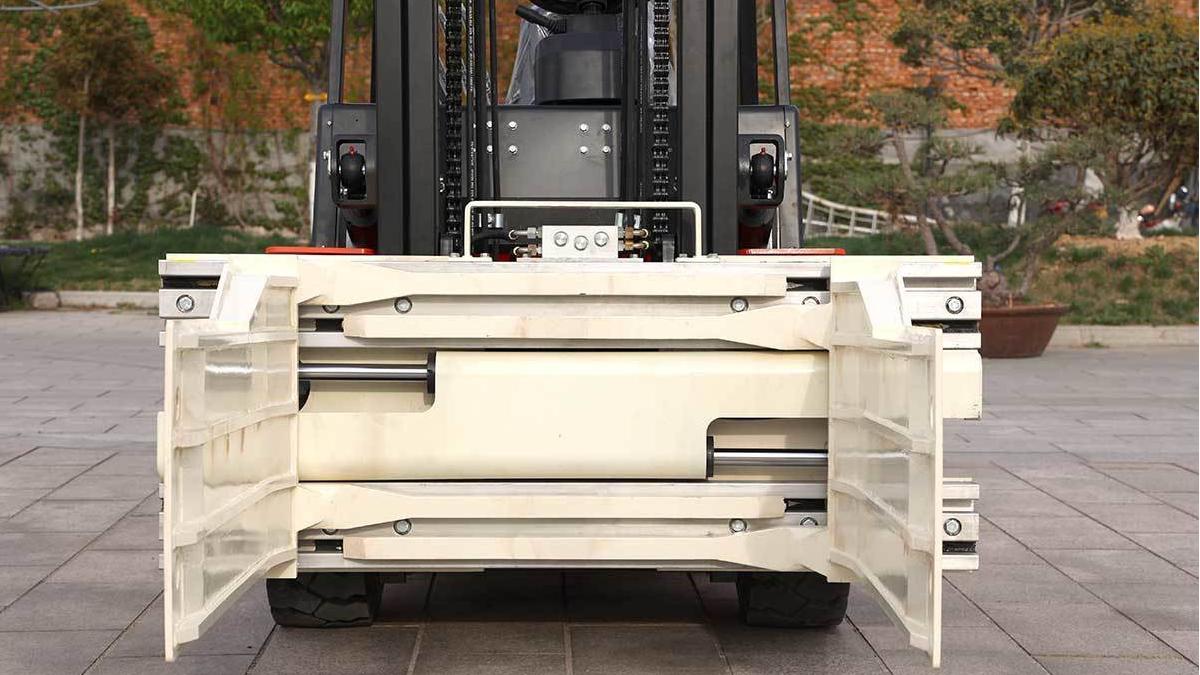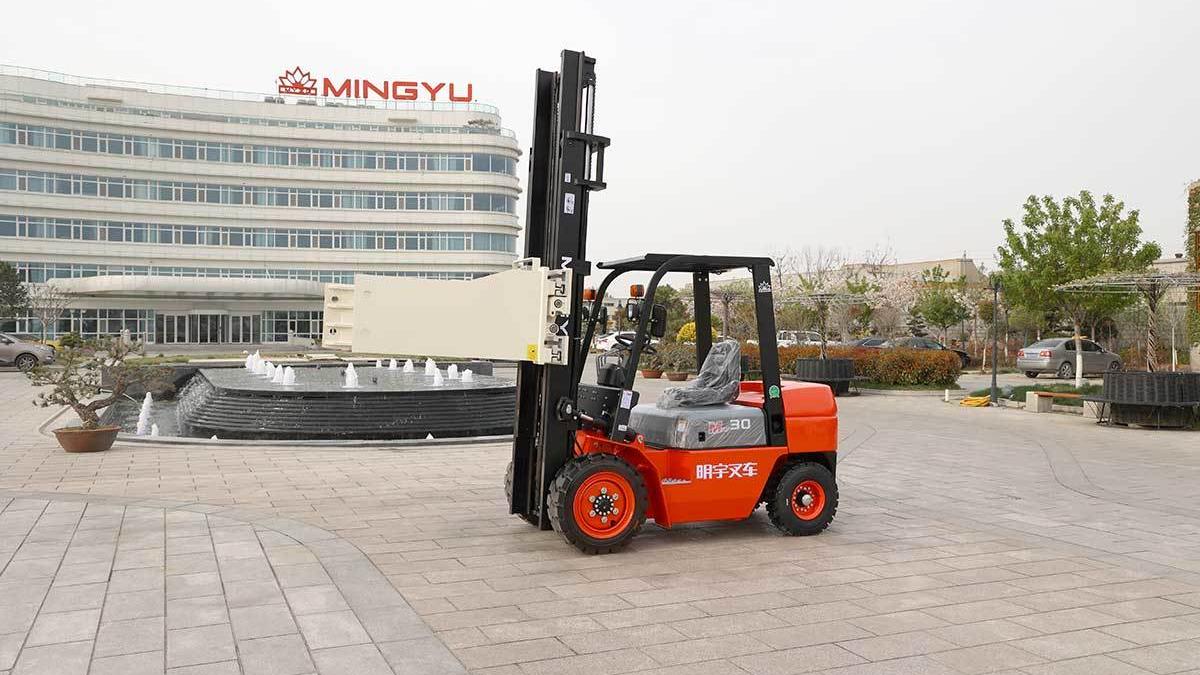How Much Weight Can a Forklift Lift?
1. Introduction
Forklifts are essential tools in warehouses, construction sites, manufacturing plants, and distribution centers. Their primary function—lifting and transporting materials—makes them indispensable. But one of the most critical aspects of using a forklift safely and effectively is understanding its lifting capacity. Misjudging how much a forklift can carry isn’t just inefficient—it can be dangerous and costly.
In this article, we’ll explore what determines a forklift’s lifting capacity, how to read a data plate, what can reduce a forklift’s effective load capacity, and how to choose the right forklift for your specific needs.
2. Understanding Forklift Lifting Capacity
A forklift’s lifting capacity refers to the maximum weight it can safely lift under specific conditions. This is often referred to as the rated capacity, and it assumes ideal conditions: the load is evenly distributed, at the correct load center, and lifted to a standard height.
However, actual lifting capacity can vary depending on multiple variables. For instance, a forklift rated for 5,000 pounds may only be able to lift 4,000 pounds when using long forks or lifting at full mast height.
Load Center
The load center is the distance from the vertical face of the forks to the load’s center of gravity. Standard rated capacity is typically based on a 24-inch load center. If your load extends beyond this point, the effective lifting capacity decreases significantly.
3. Factors Affecting Forklift Lifting Capacity
Many variables influence how much weight a forklift can lift in real-world conditions. Here are the most common:
Load Center Distance: As mentioned, a longer load center reduces lifting capacity.
Mast Height: Lifting a load higher shifts the forklift’s center of gravity, reducing stability and load capacity.
Attachments: Clamps, rotators, or fork extensions can significantly decrease load capacity due to added weight and changed center of gravity.
Tires and Terrain: Cushion tires on smooth floors maintain higher capacity than pneumatic tires on uneven ground.
Forklift Type: Different types (e.g., counterbalance vs. reach truck) are built for different lifting scenarios.
Surface Slope or Gradient: Operating on a slope can make it unsafe to lift heavier loads.
4. Forklift Types and Their Typical Lifting Capacities
Different types of forklifts serve different industries and applications, and their lifting capacities vary:
Counterbalance Forklifts (Electric, Diesel, LPG): These are the most common type and typically lift between 1,000 kg to 10,000 kg (2,000–22,000 lbs).
Reach Trucks: Designed for high racking systems in warehouses, they generally lift between 1,000–2,500 kg (2,200–5,500 lbs).
Manual & Electric Pallet Jacks: Ideal for low-level lifting, these carry between 500–2,500 kg (1,100–5,500 lbs).
Rough Terrain Forklifts: Made for construction or outdoor applications; lift capacities range from 2,500–7,000+ kg (5,500–15,000+ lbs).
Heavy-Duty Forklifts: Specialized machines used in ports or heavy industry, capable of lifting up to 50,000+ kg (110,000+ lbs).
5. How to Determine Your Forklift’s Actual Lifting Capacity
Every forklift comes with a data plate (also known as a nameplate or capacity plate) that outlines its rated capacity under specific conditions. This plate includes:
Rated capacity at specific load center
Maximum lifting height
Mast type and configuration
Attachment information (if applicable)
It’s crucial to never exceed the values on this plate. If your forklift has attachments, the manufacturer should provide an updated data plate that accounts for the reduced capacity.
If in doubt, always consult the manufacturer or an authorized dealer. Never rely solely on the model number or guesswork.
6. Safety Guidelines for Operating Within Lifting Limits
To avoid accidents or mechanical damage, operators should always follow safety protocols related to lifting capacity:
Conduct Daily Inspections: Check the forks, mast, tires, and hydraulics.
Use Proper Loading Techniques: Ensure even distribution and secure loads properly.
Never Overload: Even small overloads can lead to instability or equipment damage.
Account for Load Shape and Center of Gravity: Irregular or tall loads may require derated lifting capacity.
Utilize Spotters: For large or heavy loads that may block visibility.
Training and certification are critical. Operators must understand how to calculate safe lifting weights based on real-time variables.
7. Consequences of Overloading a Forklift
Operating a forklift beyond its rated capacity has serious consequences:
Tipping Accidents: The most common and dangerous result, leading to injuries or fatalities.
Equipment Damage: Overloading strains the mast, hydraulics, and tires, reducing lifespan.
Legal and Regulatory Issues: Violations of OSHA or local regulations can result in fines or license suspension.
Insurance Liability: Accidents caused by overloading may not be covered by insurance policies.
Forklifts are engineered to balance weight precisely—altering that balance puts the operator and others at risk.
8. Forklift Load Testing and Certification
To ensure safety and performance, forklifts must undergo regular load testing:
What is Load Testing? It’s the process of lifting test weights to verify actual capacity.
Frequency: OSHA and international standards recommend periodic testing, especially after modifications or repairs.
Certification: Forklifts must be certified by qualified personnel to ensure safe operation under expected conditions.
9. Real-World Examples and Case Studies
Case 1: Overload Tipping at Construction Site
A 3-ton diesel forklift attempted to lift a 3.5-ton pallet of bricks without adjusting for the load center. The forklift tipped forward, damaging the load and injuring the driver.
Case 2: Warehouse Operator Success
A distribution center trained operators to use the data plate and calculate reduced capacity when using a rotator attachment. Over 2 years, they recorded zero overloading incidents.
Industry Insight
In manufacturing plants, it's common to have multiple forklifts with varying capacities. Operators should always confirm the right equipment for the task—using a 2-ton forklift for a 3-ton job could be disastrous.
10. Conclusion
Understanding how much weight a forklift can lift isn't just about numbers on a data plate—it's about safety, efficiency, and proper operation. A forklift's lifting capacity depends on many factors, from load center and lift height to attachments and terrain.
To summarize:
Always refer to the forklift’s data plate.
Know how attachments and height affect lifting power.
Train operators to assess risks in real time.
Perform routine inspections and certifications.
Never exceed rated limits, even briefly.
Post time:Jun.25.2025



